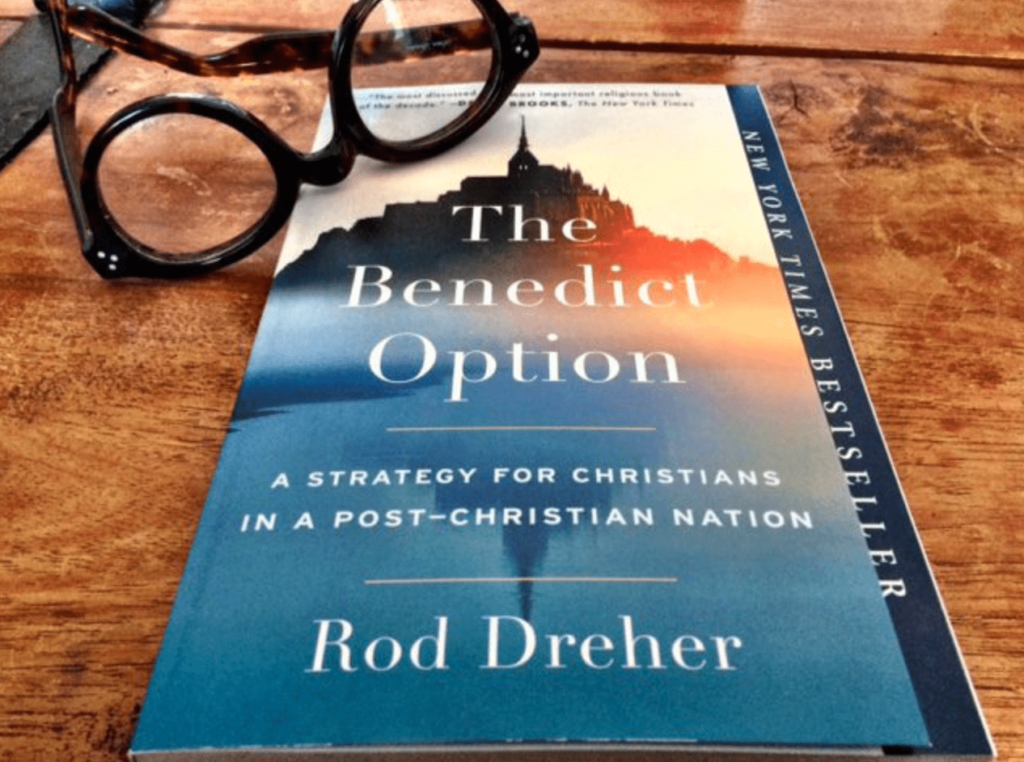The Benedict Option At Five

Five years ago today, The Benedict Option was published. What has changed in that time? And what has not?
Nothing that has happened in the past five years negates the thesis. In fact, I firmly believe it is more relevant than ever — but then, I expected that when it was published. When I finished the first draft, I assumed, like nearly everybody else, that Hillary Clinton would be president. We got Donald Trump instead — but for all the good that Donald Trump was able to do as president, it made very little difference in the decline of the Christian faith in the West. In fact, Trump’s presidency, if anything, accelerated wokeness. This is something that is very hard for many conservative Christians to accept. But it’s true. I’m not saying that you shouldn’t have voted for Trump, but only that the four years of the Trump presidency should have made it crystal clear that we are not going to vote ourselves out of this crisis.
It is far clearer now that traditional, small-o orthodox Christians, are a minority in America, and an increasingly despised one. I anticipated this. The Benedict Option has in some ways been overtaken by Live Not By Lies, which is about how to live as a faithful Christian (or someone who refuses the lies of wokeness, even if not a Christian). But the two books are complementary, in fact. Live Not By Lies is more or less an intensification of The Benedict Option — but the more general point of The Benedict Option still holds firm: that Christians who expect to make it through the storm that has overtaken our culture had better form resilient, strong, disciplined communities of formation and practice.
Two things surprise me, five years on. First, that I’m still having to argue with people that I’m not saying that Christians should head for the hills. Actually, I’m probably more open to the “head for the hills” strategy than I was when the book was first published, but I really don’t think that anybody is going to be able to escape these trials by geographically situating themselves. I believe that this accusation is part of a coping strategy on the part of Christians who don’t want to accept that things are as bad as they are. If they can write The Benedict Option off as a crackpot bunker strategy, they don’t have to face the hard questions it poses. If The Benedict Option is wrong in its diagnosis, then fine: what do you propose we do about the collapse of the faith among the young (and the not-so-young)? My prescription might be off-base, I dunno, but I don’t see how any reasonable Christian can deny the severity of this challenge.
Second, I am surprised that The Benedict Option has done so well in Europe. It took me some experience over here in Europe to figure this out. The people who read the book and take it to heart on this side of the Atlantic are mostly Millennials and Generation Z believers. If you are aged 40 and under and still go to church, you know all too well how isolated you are. You don’t have to be convinced, as American Christians do. You have already lived through the de-Christianization of your society and culture, and you are looking for ways to live out the faith in a post-Christian culture. This book helps in some ways, if only by telling the truth about where we are.
The greatest moment in this book’s life for me came on September 11, 2018, in Rome, when Archbishop Georg Gänswein, the private secretary to Pope Benedict XVI, delivered this speech lauding the book (read down in the item). Italian journalist friends before the speech told me that whatever Gänswein said, I could be confident that Benedict approved every syllable. I was very nervous before his talk, but if you read it, you can understand why it nearly reduced me to tears.
Since the book was published, more people have come to know the Tipi Loschi, the beautiful and God-loving Catholic community in San Benedetto del Tronto, Italy. Giovanni Zennaro and his friends have established a Ben Op community near the monastery in Norcia, where Catholic families can live together. In France, some young Catholics started a business called Monasphère, that puts families together with communities living near monasteries. There may have been more initiatives that I haven’t yet heard of; if so, please let me know in the comments section.
I am grateful to all of you who have bought the book and who have had good things to say about it. I pray that it will continue to bless people, and inspire those who have the gifts that I lack — for example, the gift of building things — to get busy. We are all in this together.
Today is the feast day (in the Orthodox Church) of St. Benedict. My publisher did not know that when they assigned March 14 as the publication date. I took that as a sign from God that His will was behind this book. I give glory to Him for any good that this book has done in the world, and I thank St. Benedict of Nursia for his prayers — and, I give thanks for the community of Catholic monks in Norcia, still living out their patron’s vision.
Did you read the book? What does it look like to you, five years later? What did it get right? What did it get wrong? Did it make a difference to you?
Subscribe for as little as $5/mo to start commenting on Rod’s blog.